The Panama Canal – Miraflores Locks
So, what’s the most famous thing about Panama? No, it’s not hats – they are not even from Panama – it’s the canal of course! And yes, we were about to go and see the world-famous Panama Canal in action! 🙂
Our original plan was to try and go on a tour where you get to pass through the canal in a boat. But there is really only one option for this, and it didn’t have very good reviews – everybody gets crammed onto a tiny deck for six hours. It costs a lot to take a boat through the canal, and so there is only one a day for tourists.
So instead we decided to visit the locks at Miraflores – they are only just outside Panama City and can be reached by bus. The main time that the boats pass through is either first thing in the morning, or later in the afternoon, so we headed over after lunch.
There is a visitor centre at the locks – with viewing decks, a museum, and a cafe. The idea of spending four hours watching ships pass through the locks might not sound that exciting – but YES – it is EXCITING! 🙂 OK, well – it’s very interesting anyway.. 🙂

The Panama Canal is a modern engineering wonder – there is a lot to know about the canal, but here are some interesting facts (‘interesting’ as decided by me 🙂 )
It connects the Atlantic and Pacific oceans, and is 82km long. Using the canal shortens the distance by sea from New York to San Francisco by 15,000km! It’s not a ‘canal’ the whole way – there is a large artificial lake at the highest point – which is 26m above sea level.
There are now FIVE sets of locks – three form the original set of locks, and two form a new set of locks which were completed in 2016 – the Panama Canal expansion project. The original locks could take a ship weighing up to 50,000 tonnes, and with a width of 32.3 metres. It was so important that ships could pass through the canal, that ships were specifically constructed to be as large as possible, but still fit through the canal – these are called Panamax ships. The expansion allowed EVEN BIGGER ships to get through – this size is called ‘Neopanamax’, or ‘New Panamax’ – the ships using the new locks can be up to 120,000 tonnes in weight, and 51.25m wide – yes that’s a big boat!
Now the burning question is…. how much does it cost to go through the canal in a giant boat? Well, container ships at the moment pay $90 USD per full container, and cruise ships pay $138 USD per full-berth – eg, they pay per passenger bed. There are different costs for empty containers and empty beds though, and another scale for other types of ships. What does that mean in actuality? Well, a fully-loaded New Panamax ship could get a bill of around $396,000 USD, and the highest bill paid by a cruise ship was $375,000 USD by the Norwegian Pearl. The average toll is supposedly around $54,000 USD. Yes, you had better have a good reason to go through! Apparently a man called Richard Halliburton swam through the canal in 1928 – they still charged him – 38 cents…
The canal opened in 1914, and the whole area around it used to be United States territory – an area called the ‘Canal Zone‘. It was handed back to Panama in 1999.

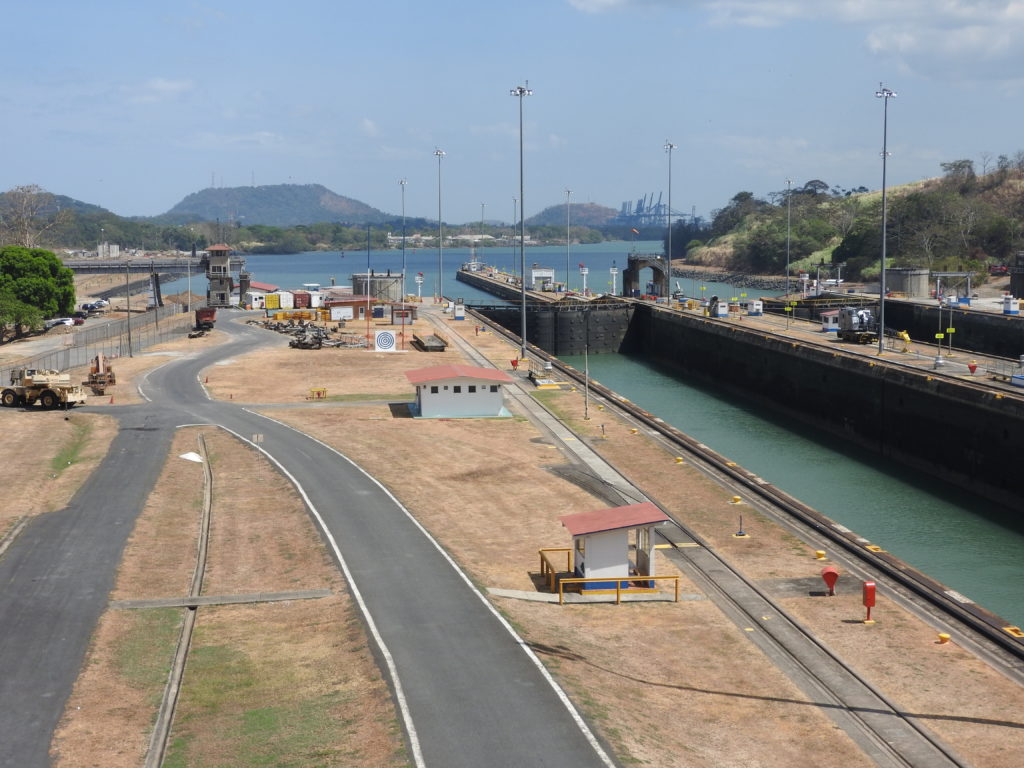

The Miraflores Locks are 16.5 metres high and have two chambers – eg. there are two channels for ships to pass through.
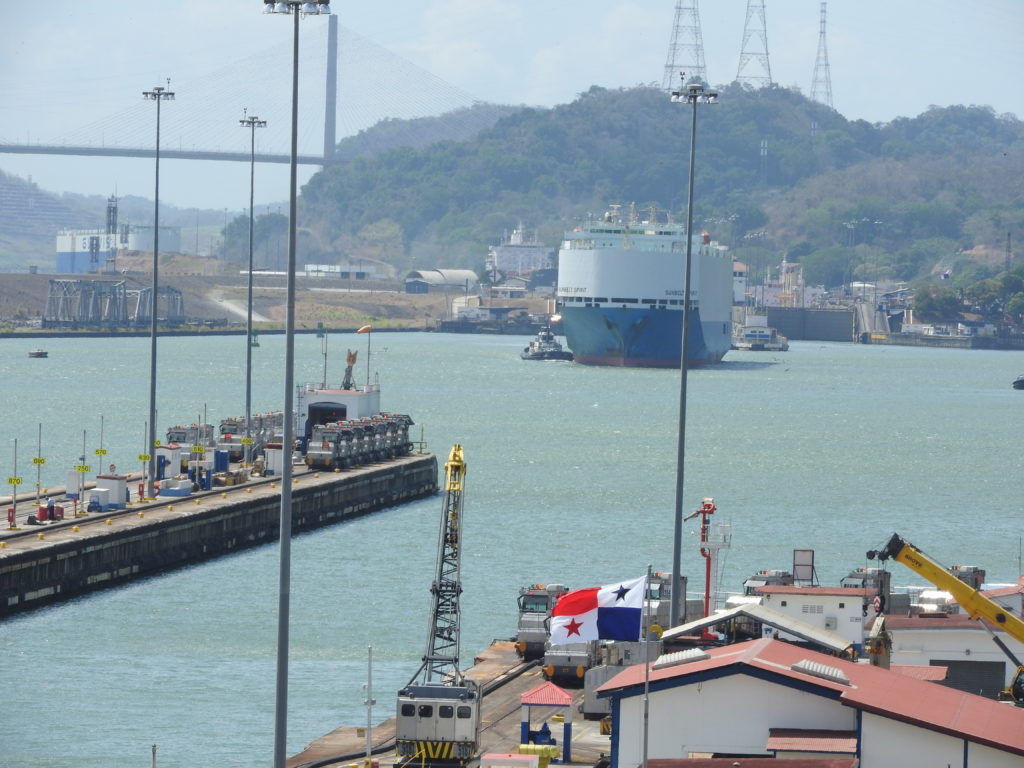
We spent most of our time on the top viewing deck, and managed to watch quite a few ships pass through the locks. When there was a bit of a gap between the ships, we went to check out the museum – which had a lot of information about the history of the canal.

It’s not possible to accurately control the ship in such a small area as the lock, so there are towing tractor-like vehicles on rails beside the lock – and they help pull the ship into the correct position – they are known as ‘mules‘.
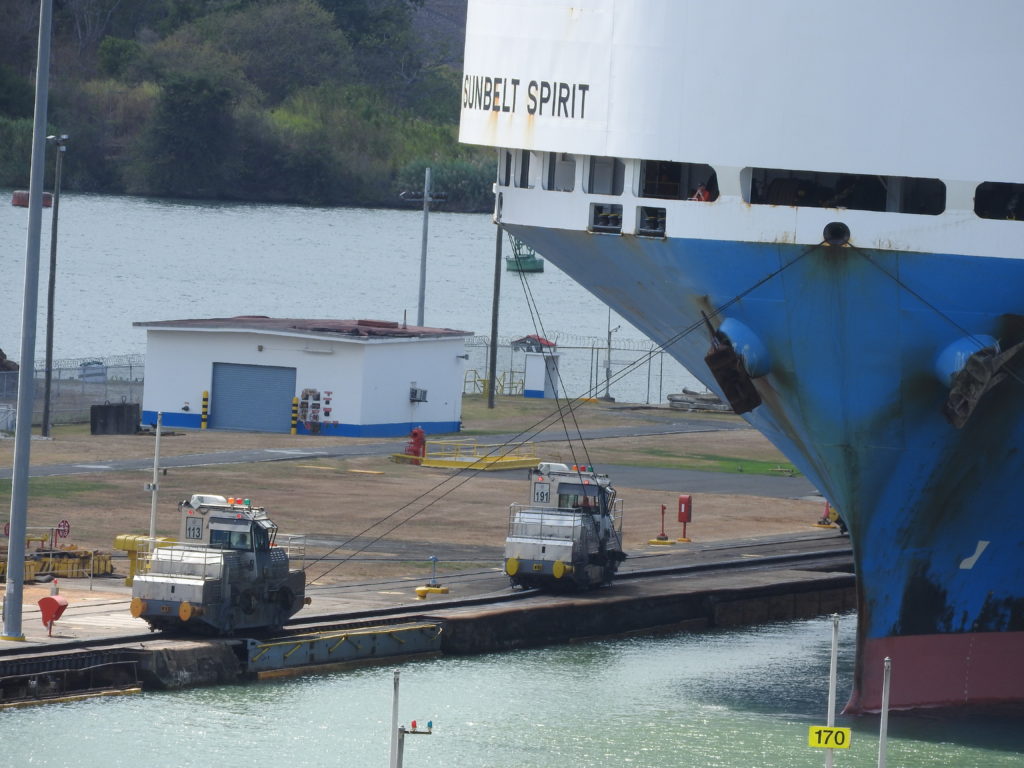
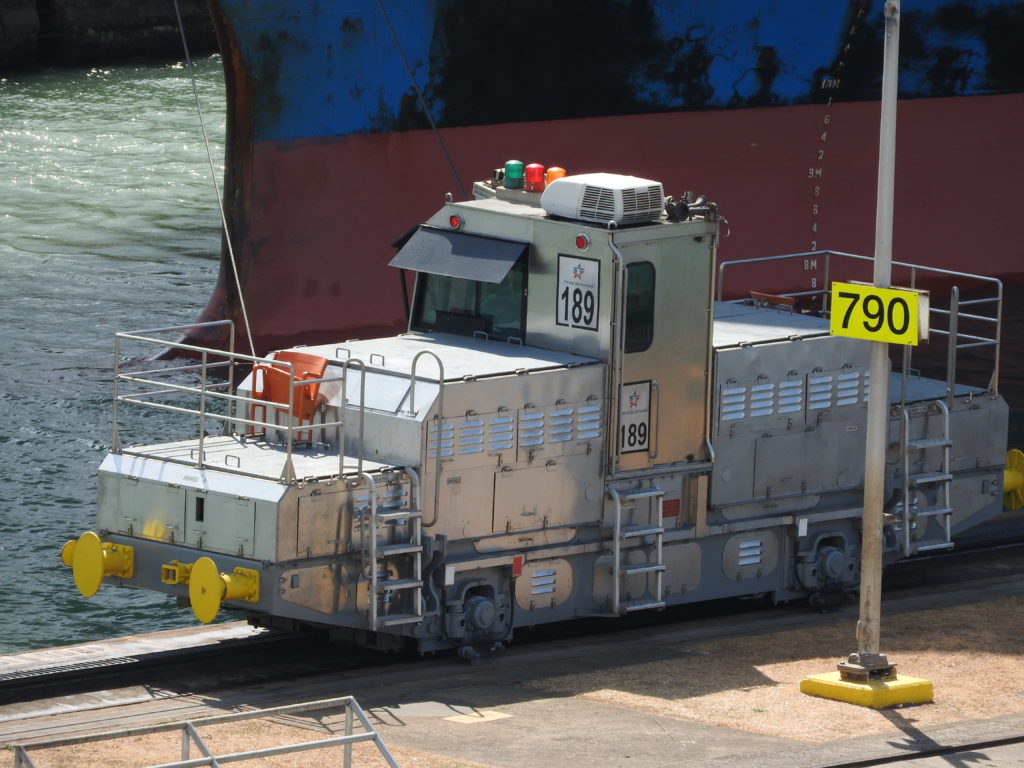
The full length of the lock needs to be used before they open and close the gates – so small boats get put in with other boats to use up the space. There were three small yachts using the lock, and they got put between two other larger boats.
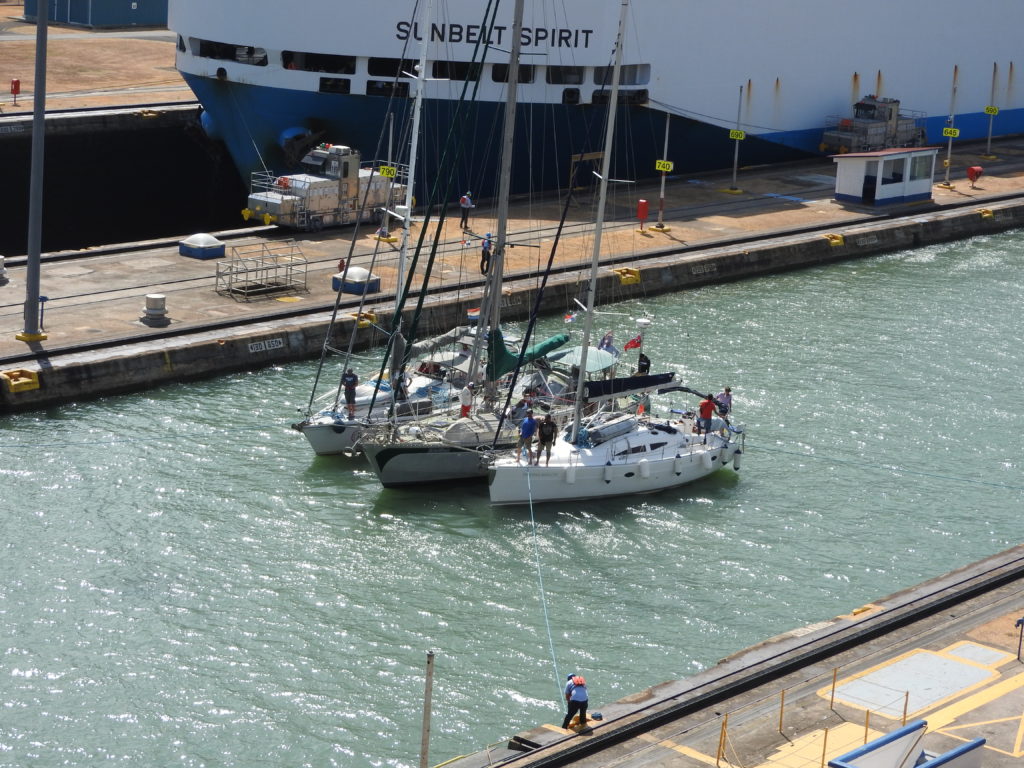
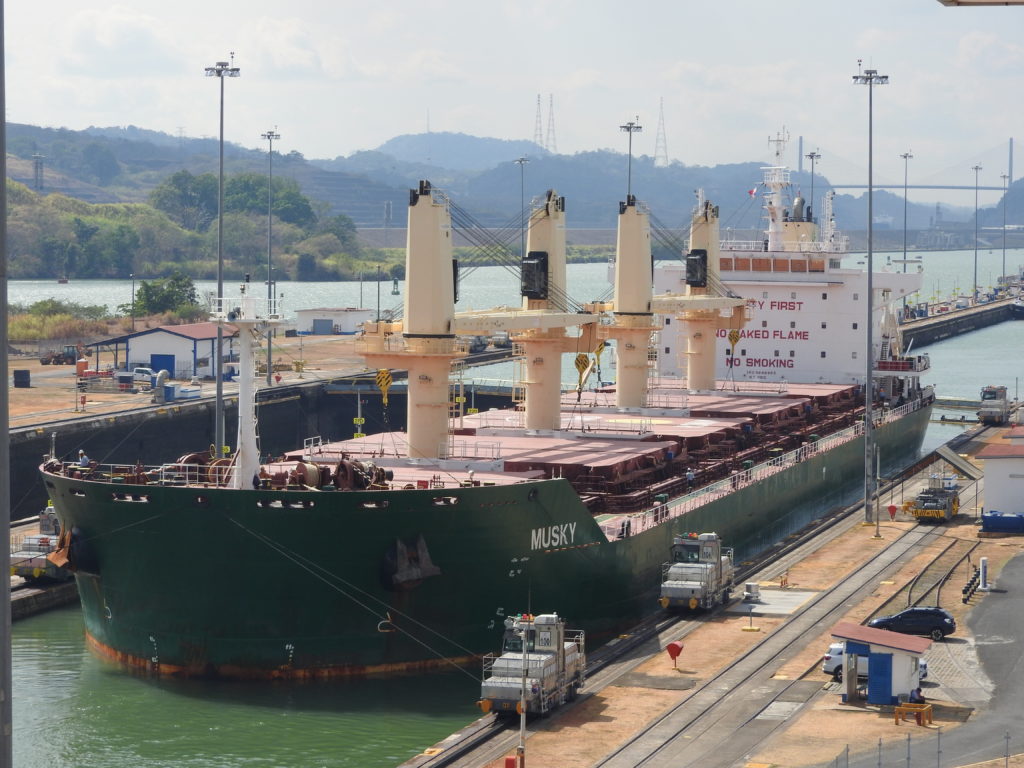
Once all the boats were in the channel, the back gates opened and the water level began to drop.
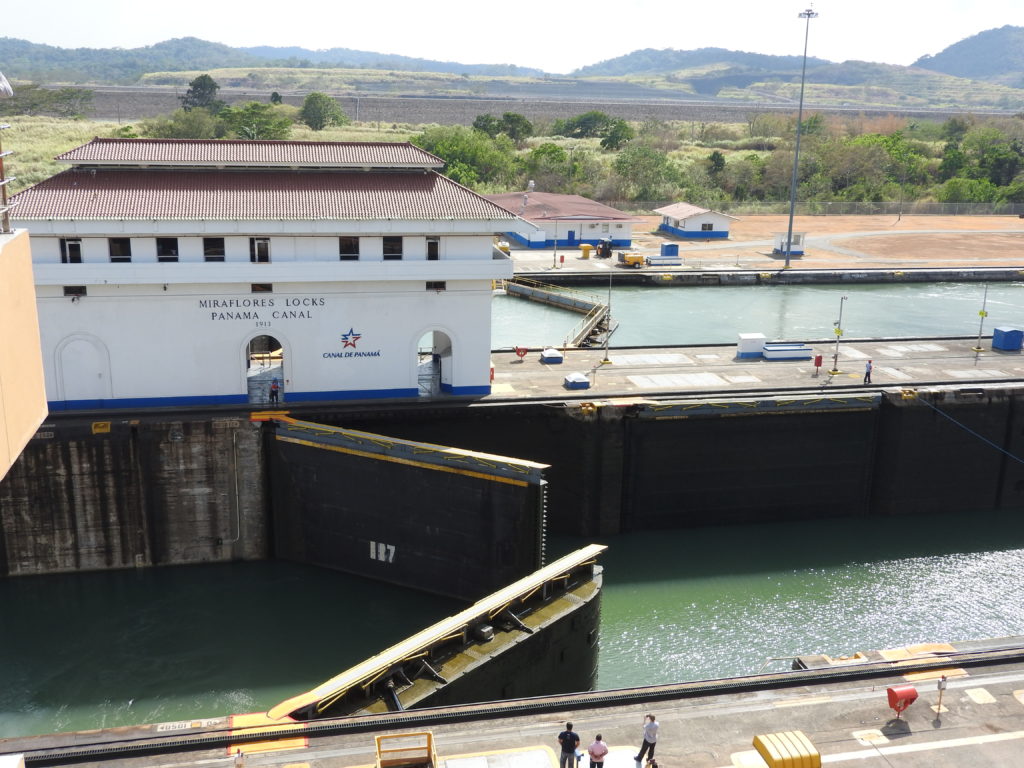
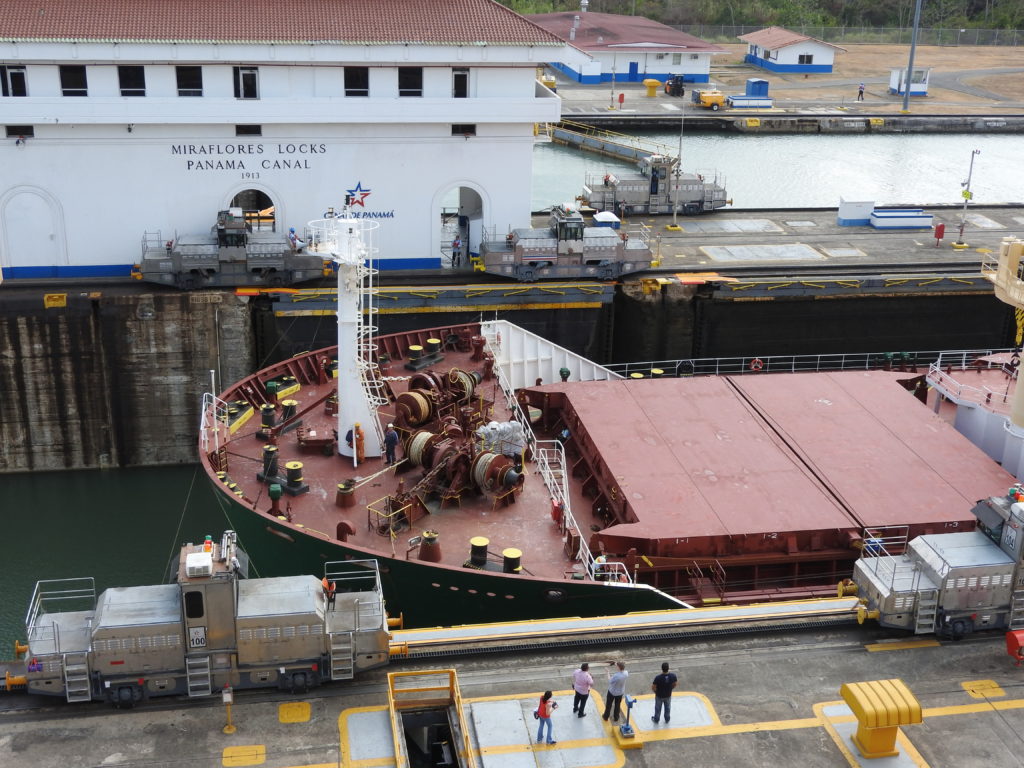
You might be wondering what would happen if one of the gates broke? Well, there would be a giant flood! Luckily, they have thought of that, and so there are extra safety gates at both ends of the lock – just in case something happens to the main gates.
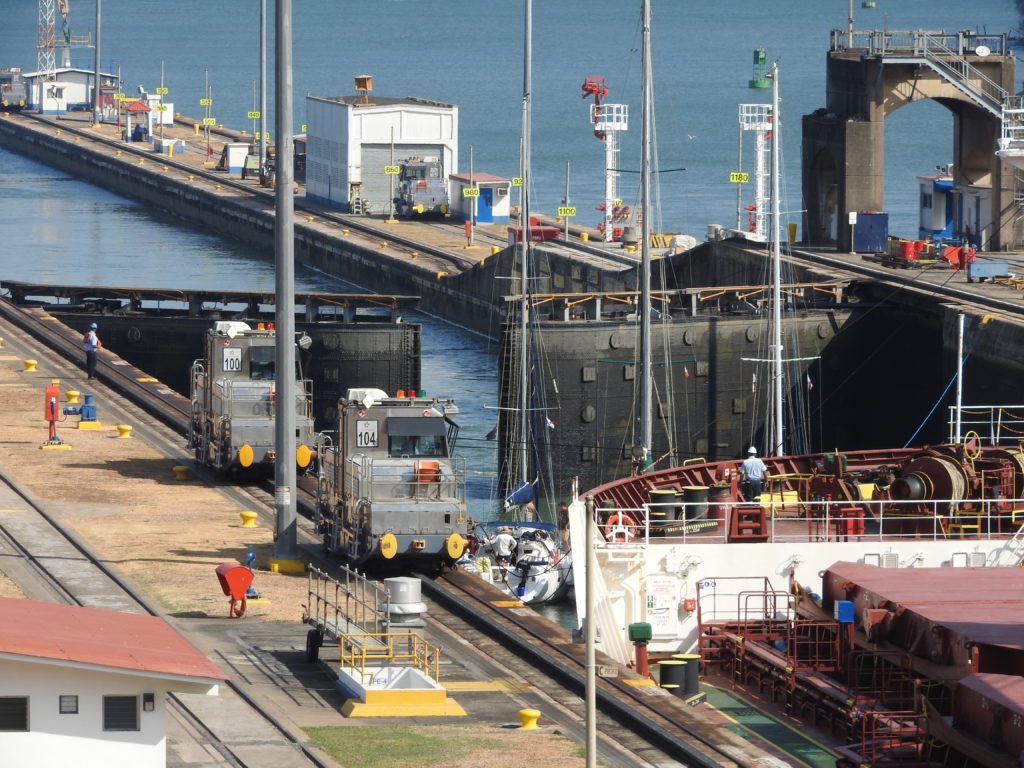
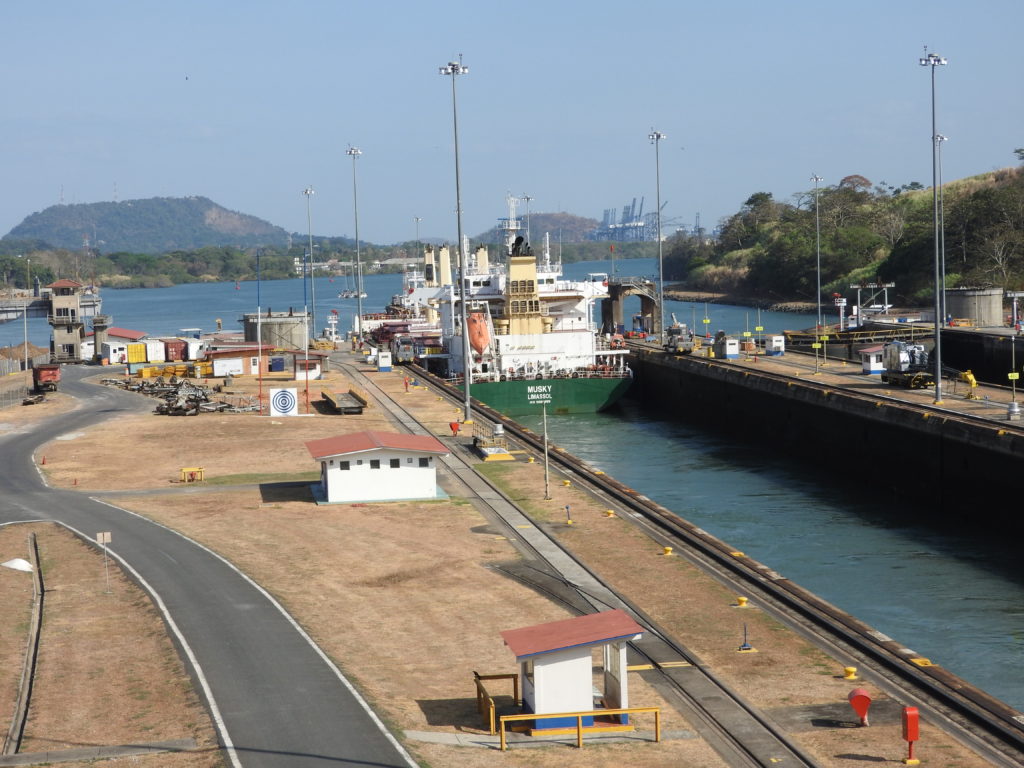
After a while we had become slightly addicted to watching the boats pass through, and so we ended up staying until the visitor centre closed! 🙂

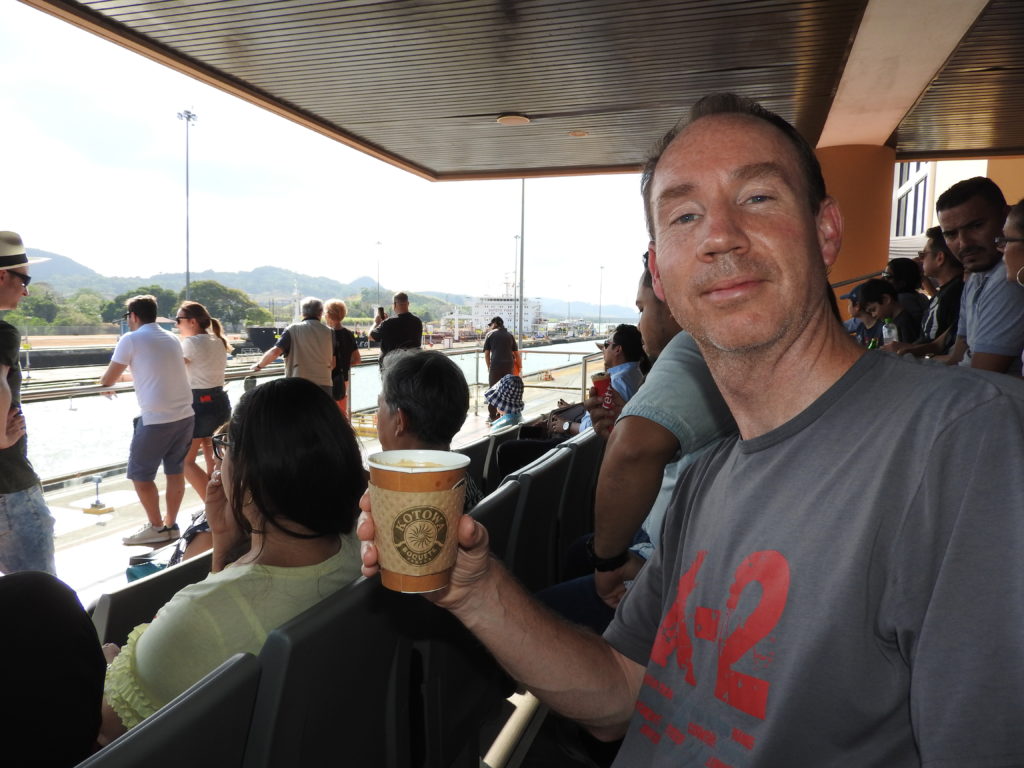

We REALLY enjoyed our visit to the locks – it was much more entertaining than we had imagined it would be! 🙂
